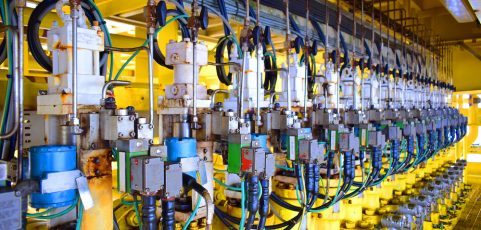In any type of building where hydrogen sulfide is used, workers know the importance of properly monitoring for this substance. Should the smell of rotten eggs begin to permeate throughout an area, it leaves no doubt a hydrogen sulfide gas leak has occurred. When this happens, it will be crucial to get the area evacuated as quickly as possible, determine the source of the leak, and initiate equipment repairs or shutdowns to solve the problem. Due to the dangers associated with hydrogen sulfide, companies invest in sophisticated hydrogen sulfide gas detectors in an effort to maintain the highest levels of safety. If you are planning to install these detectors in your facility, here are some simple and safe steps to follow during the installation process.
Equipment Shocks and Vibrations
If you are installing H2S meters near various pieces of industrial equipment, always be aware the equipment could produce shocks and vibrations along the way. If this happens, you could be putting yourself or other technicians at risk of possible injury. Along with this, also be aware that if the equipment does indeed produce shocks and vibrations at times, this may also affect the performance of the H2S monitor. Due to this possibility, it may be best to find a different place to install your monitor.
Confined Spaces
Should you be installing hydrogen sulfide sensors in or near confined spaces, always be extremely cautious. Since confined spaces are used primarily for storage of various chemicals and can usually contain pipes, valves, and many different types of equipment, they are considered some of the most dangerous areas within any building. To make sure the installation of hydrogen sulfide meters goes as safely as possible, always make sure a number of precautions are taken. To begin with, always have portable detection devices with you while installing fixed meters and monitors, since they will allow for hands-free monitoring while still transmitting real-time data to nearby personnel. Also, make sure others are aware of your location and what tasks you are performing, since a hydrogen sulfide gas buildup can occur in only a few minutes within a confined space.
Properly Calibrate and Test the Detector
Once you have completed installation of the detector, always test it to make sure it is properly calibrated based on the existing work environment. By doing so, you will not only make sure it is sending accurate real-time data to engineers in off-site monitoring centers, but also that it is able to detect a potential hydrogen sulfide gas buildup as quickly as you anticipate. To do so, use a small amount of gas to perform a safe and controlled test, then either calibrate the detector yourself or have engineers program it remotely from their monitoring location.
While installing these meters is made to be very easy, it is still important to know and use the proper steps to maintain a safe working environment. Should you have questions about the installation process, contact GDS at 409-927-2980 or visit online at www.gdscorp.com.

